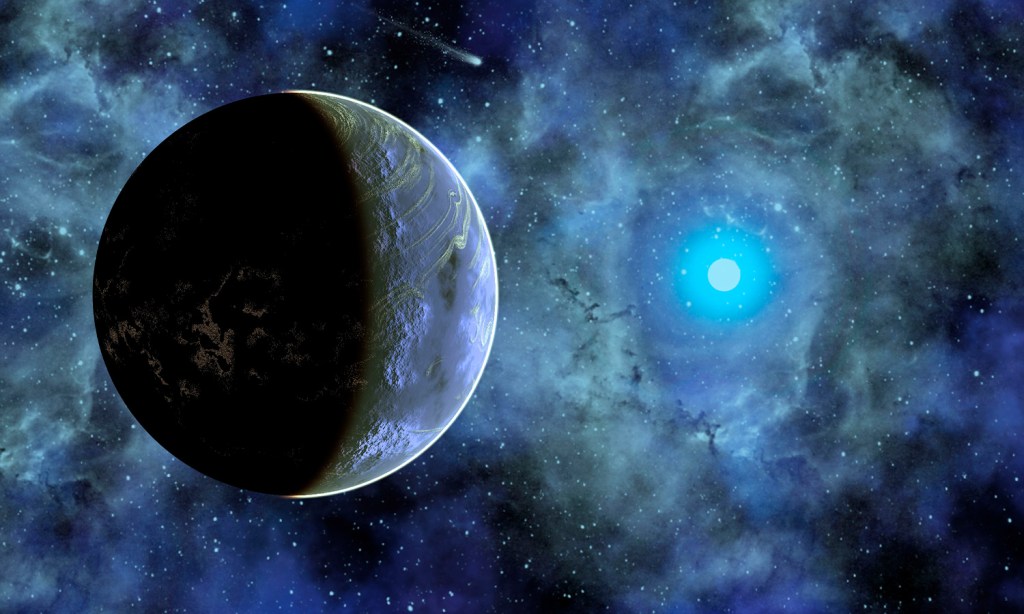Scientists have said that the universe is chock full of mysterious floating rock balls known as rogue planets. These planets might vastly outnumber the stars in the universe and some could even contain life.
When we think about planets, we’re probably primarily concerned with the eight in our solar system, plus our fallen brother, Pluto. Expand this a little further and we might even consider the sinister planet Nibiru, or Planet X, the harbinger of death.
We know that there are planets circling other stars in our galaxy, and presumably in other galaxies. However, scientists now believe that there are probably a thousand times more planets out there than there are stars. What’s even weirder is that the vast majority of these planets have no star to orbit around. It appears that we, as part of a planetary system, are the odd ones.
These free-floating rogue planets are thought to have formed in the same way as other planets, through the collapse of a gas cloud, but they may also have been ejected out into deep space from a planetary system, possibly through collision.
The problem is though, these guys are incredibly difficult to spot, owing to the fact that they’re way out in deep space and not illuminated by any nearby star. Recently, scientists went back over data collected from 2004 to 2016 and discovered two new planets we’d previously observed. We just didn’t know it at the time.
Here’s why these incredibly strange intergalactic loners have scientists questioning whether they could hold the answer to some of the biggest questions out there.
Are There Any Rogue Planets?
Categorically, yes. The real question is how many rogue planets are out there. Scientists first detected a rogue planet in 2012 and, since then, estimates for how many are out there continue to grow.
In 2012, one study suggested that, for every star that forms in the universe, anywhere from 100 to 10,000 nomadic planets also form. Our own galaxy contains, roughly, 400 billion stars while there are thought to be two trillion galaxies in the universe. This means there could be something in the range of 40 to 4000 trillion rogue planets in our galaxy, the Milky Way, alone.
Planet CFBDSIR2149 was the first rogue planet discovery, and its proximity helped astronomers learn more about these planetary anomalies. Some scientists believe these planets could even host life, despite all odds. https://t.co/lqHl6GZtQo pic.twitter.com/eLxtACOodw
— Inverse (@inversedotcom) December 23, 2021
Given they are so common, it’s weird that we’ve only been able to locate between 140 and 340 of them. Scientists typically use a technique called microlensing surveys to identify distant planets. This is the practice of detecting tiny shifts in light patterns as entities move between stars and satellite telescopes. Because we’re not sure whether some of these shifts are caused by failed stars or by planets, the numbers above are a rough approximation.
What Is the Closest Rogue Planet to Earth?
When people talk about rogue planets, often one of the biggest concerns is how close are they and how likely are they to smash into us. Thankfully, the answer to both is ‘not very’.
The closest known rogue planet to us is known as WISE J085510.83-071442.5 which was discovered by NASA’s Wide-field Infrared Survey Explorer and Spitzer Space Telescope in 2014. It’s thought to be a cold ‘brown dwarf’ star, with an average temperature of between -48 and -13 degrees Celsius.
The brown dwarf is just 7.2 light years from our own planet and is just floating around out there, unattached to any star. In case you’re wondering, 7.2 light years is roughly 68 trillion km away, so not exactly our nearest neighbour.
As to whether or not WISE J085510.83-071442.5, or any other rogue planet, is headed in our direction any time soon, experts have said that, without having a star to circle, these planets just drift around in stable orbit, circling the galaxies centre. If they haven’t smashed into us in the past 4.5 billion years, they’re not likely to now.
Can Life Exist on a Rogue Planet?
The thing about rogue planets, as the above example and simple common sense would suggest, is that they’re very, very cold. Likely, most of them are just balls of frozen elements that don’t have the preconditions of liquid water and oxygen to support life. Younger planets, when they are formed, are incredibly hot but they cool down over time, making them unlikely hosts.
A #Jupiter-Like Rogue Planet Wanders Alone in Space This artist's conception illustrates a #Jupiter-like planet alone in the dark of space, floating freely without a parent star. pic.twitter.com/BMQ3ejq5nQ
— Space (@redditSpaceView) October 7, 2021
However, if life is to be found on a rogue space rock, it might not be on the planet itself. It could well be in their moons.
A recent study found that the gravitational pull between the moon of a wandering planet could be enough to keep the moon warm so that it sustains liquid water long enough for life to emerge.
Astronomer Guilia Roccetti has said that some of these exomoons could stay above freezing for over a billion years if their atmosphere is dense enough.
Over time, the evaporation and condensation of liquid can create chemical complexity that promotes the accumulation and polymerisation of life-precursor molecules like RNA.
While it’s all very difficult to prove, and it’s not like we can visit them any time soon, some scientists do believe that nomadic planets could be “interesting candidates” for life-sustaining worlds.
Related: A Hybrid Solar Eclipse Is Dropping in Australia Next Week
Related: NASA Wants Scientists to Prepare for the Discovery of Alien Life
Read more stories from The Latch and subscribe to our email newsletter.

